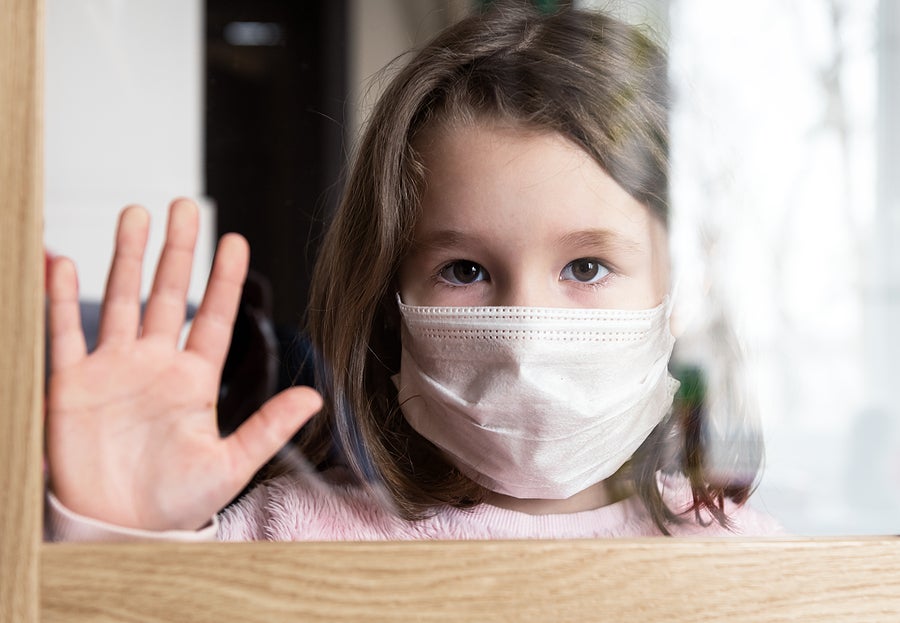In 2020, at Georgetown University CCF and elsewhere, there has been a lot of discussion about and tracking of what is happening with Medicaid enrollment. Between the recession and the disenrollment freeze, Medicaid enrollment has trended upwards – a recent study from the Kaiser Family Foundation looking at Medicaid managed care enrollment in 30 states finds that enrollment increased by 11.3 % from March to September 2020. There has been a fair amount of variability among states, and overall non-elderly non-disabled adults have seen the largest growth, with child enrollment growing at slower but still significant rates. A Manatt Health study estimates child enrollment (including Medicaid and CHIP kids) growing at 5.2% in the median state.
Unlike Medicaid, the Children’s Health Insurance Program (CHIP) does not have a disenrollment freeze in place – so states that have a separate state CHIP program are able to disenroll those kids according to state guidelines or make them wait for coverage. Children enrolled in Medicaid but funded through the enhanced CHIP matching rate are protected by the disenrollment freeze. (Note: The “maintenance-of-effort provisions” included in the Affordable Care Act and extended through 2027 by the Bipartisan Budget Act of 2018 prohibit rolling back income eligibility for CHIP or making enrollment more onerous except in states covering children over 300% of the federal poverty level.)
So, one wonders what is happening with CHIP enrollment for these separate state CHIP programs. 35 states have separate CHIP programs (of varying sizes), and we’ve been able to track down data for approximately half of them. We use February as our pre-pandemic baseline to measure the change in enrollment over the course of the public health emergency.
Overall, unlike Medicaid, enrollment in CHIP is declining. This is perhaps to be expected: as families’ incomes decline, their child may be more likely to be eligible for Medicaid than CHIP. In fact, this is the explanation given by the state of Pennsylvania, which is showing a 4.4% decline in its CHIP enrollment. (See Table 1 below.)
On the other hand, there are also likely some families who were previously over the income eligibility limit for CHIP, but have lost income/jobs in recent months and now qualify for CHIP coverage. Moreover, one cannot assume that all children are moving seamlessly from CHIP to Medicaid unless the state is transferring them automatically with no effort required by the family.
As we see in the Medicaid enrollment numbers, there is a lot of variety in the CHIP enrollment trends among states, with Missouri seeing the biggest increases. Missouri has also seen increases in Medicaid enrollment as well. That is interesting especially as a few years ago Missouri was losing lots of kids due to inappropriate case closures.
The states with the biggest declines in their CHIP caseload are Florida and Tennessee – 16.3% and 11.7% respectively. Florida has a relatively large increase in Medicaid according to the KFF analysis while Tennessee does not. Neither state has expanded Medicaid so children are a key (though not exclusive) driver of Medicaid enrollment increases. Both of these states would do well to see what is happening here. While 22 states have waived, suspended, or delayed enrollment fees, premiums, and other charges for CHIP families under emergency administrative authority, Florida still charges premiums for its KidCare program, which may be even more of a barrier these days.
As the pandemic-related economic recession continues, helping CHIP children whose families lose income transition to Medicaid and helping families whose children are newly eligible for CHIP enroll is critical to ensure that children are not falling through the cracks. States can consider waiving premiums and enrollment fees for CHIP, using HSI funds for creative outreach programs, and checking for Medicaid eligibility and transferring them with as little effort by the family as possible is required when CHIP kids are disenrolled. Kids have had a tough year in 2020, but we can make 2021 better by ensuring that they have access to the critical health coverage and services they deserve.



